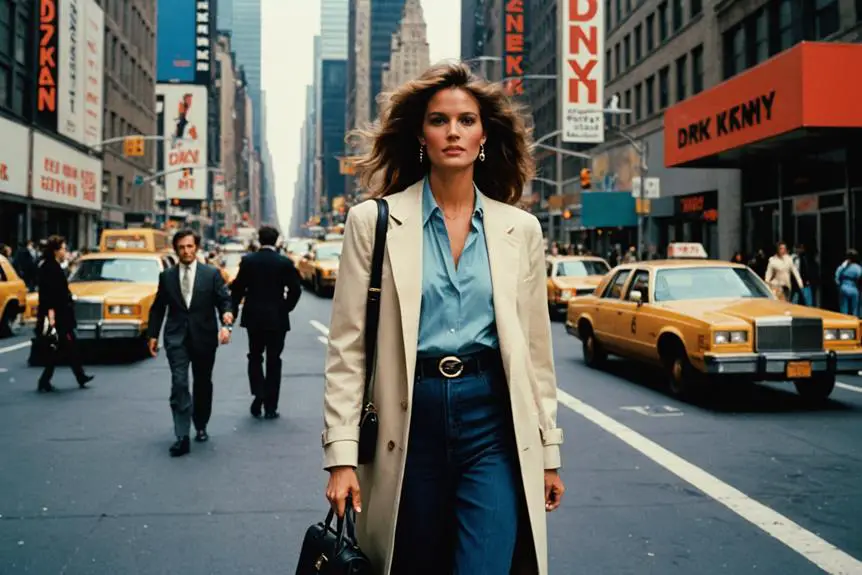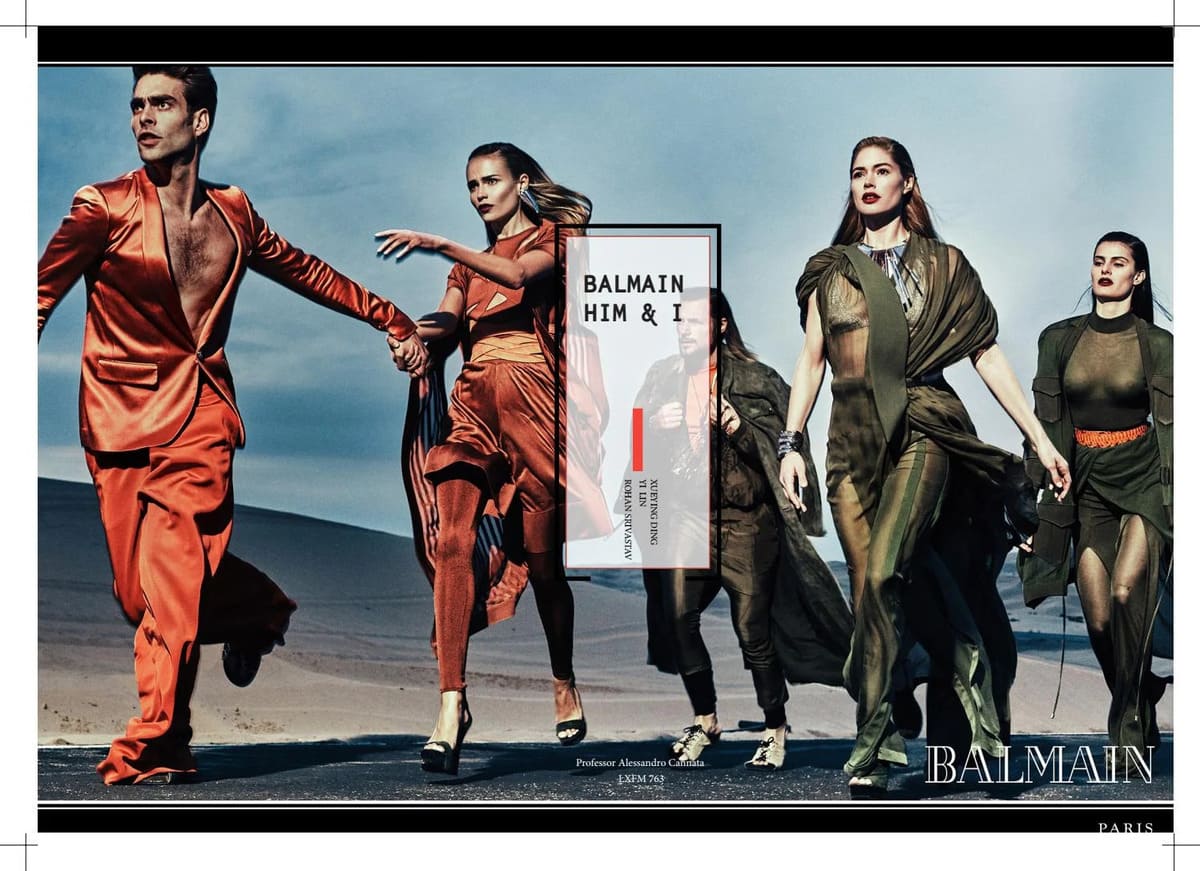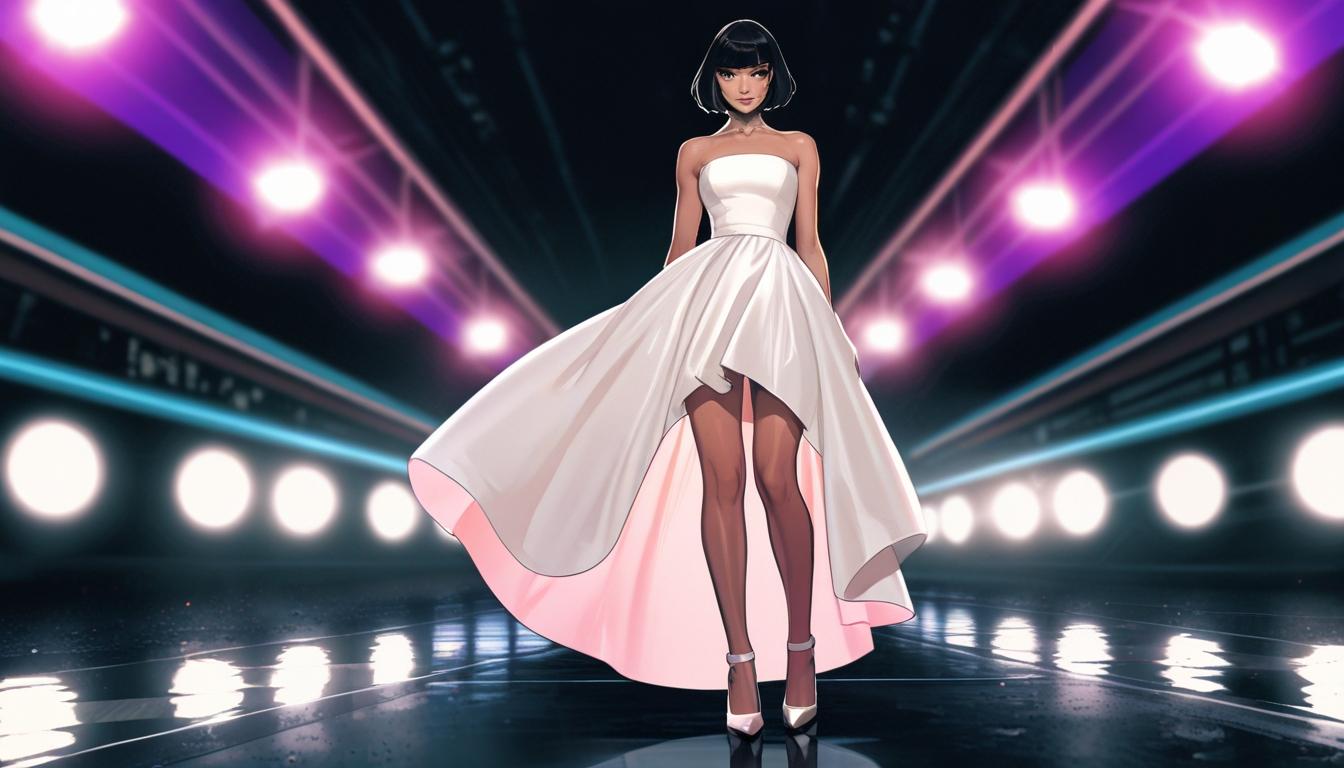In the late 1960s, fashion brands transformed the style scene, driven by a youthful desire for change. Designers like Mary Quant made the mini skirt a staple, while André Courrèges introduced futuristic geometric designs. Biba captured the essence of mod culture with bold colors, and Ossie Clark embraced the bohemian vibe with flowing silhouettes. Other significant names included Rudi Gernreich, known for his daring creations, and Foale & Tuffin with playful patterns. Accessories like go-go boots and oversized sunglasses completed the look, reflecting the decade's spirit. If you're curious about the lasting impact of these trends, there's more to explore!
Overview of Iconic Brands
The late 1960s saw fashion brands break away from traditional styles, embracing bold designs and youthful energy. You could feel this shift in the air, especially with iconic figures like Mary Quant leading the charge. She popularized the mini skirt and affordable fashion items like pinafores and mix-and-match separates, making trendy clothing accessible for everyone.
This era of innovation also paralleled the rise of unique cultural movements, much like the Harley Davidson community, which fostered a sense of individuality and freedom through their iconic motorcycle culture.
Then there's André Courrèges, who took the scene by storm with his revolutionary space-age fashion. His designs featured geometric shapes and innovative materials like PVC, capturing the era's fascination with technology and the future.
Meanwhile, Pierre Cardin was pushing boundaries with avant-garde creations that showcased metallic fabrics and futuristic cuts, reflecting a world enthusiastic to explore the unknown.
Don't forget about Ossie Clark, whose flowing silhouettes and bohemian styles resonated with the free-spirited youth of the time. His work embodied the essence of the hippie movement, inviting you to embrace a more relaxed and natural look.
Biba also emerged as a significant brand for young women, offering bold patterns and stylish yet affordable clothing. This brand perfectly captured the essence of youth culture, encouraging young women to express themselves through fashion.
Together, these brands and designers shaped the late 1960s, creating a vibrant tapestry of styles that reflected the energy and spirit of a generation eager for change. Whether you were drawn to mini skirts or space-age designs, there was something for everyone during this revolutionary time in fashion.
Key Designers of the Era
Key designers of the late 1960s were instrumental in shaping the era's dynamic fashion landscape. You can't talk about this period without mentioning Mary Quant, who popularized the iconic mini dress, making bold, youthful fashion accessible to everyone. Her vision was about youth and freedom, perfectly capturing the spirit of the Swinging Sixties.
Then there were the space age designers like André Courrèges, who introduced geometric shapes and innovative materials like plastic and PVC. His avant-garde approach changed how people viewed fashion, propelling it into a futuristic domain. Pierre Cardin followed suit with his daring silhouettes and even helmets on the runway, challenging conventional norms.
Ossie Clark brought a different vibe to the scene, known for his flowing, bohemian styles that resonated with the counterculture movement. His romantic prints and soft fabrics exuded a laid-back elegance that many adored.
Meanwhile, Rudi Gernreich boldly challenged societal norms with his daring designs, including the notorious topless swimsuit, which symbolized the decade's spirit of liberation and self-expression.
These key designers didn't just create clothes; they shaped fashion trends that reflected the cultural shifts of their time. Their creativity and fearlessness left a lasting impact, influencing generations to come.
Their contributions are a reflection of how fashion can mirror societal changes, making the late 1960s an unforgettable era in the history of style.
Popular Clothing Lines
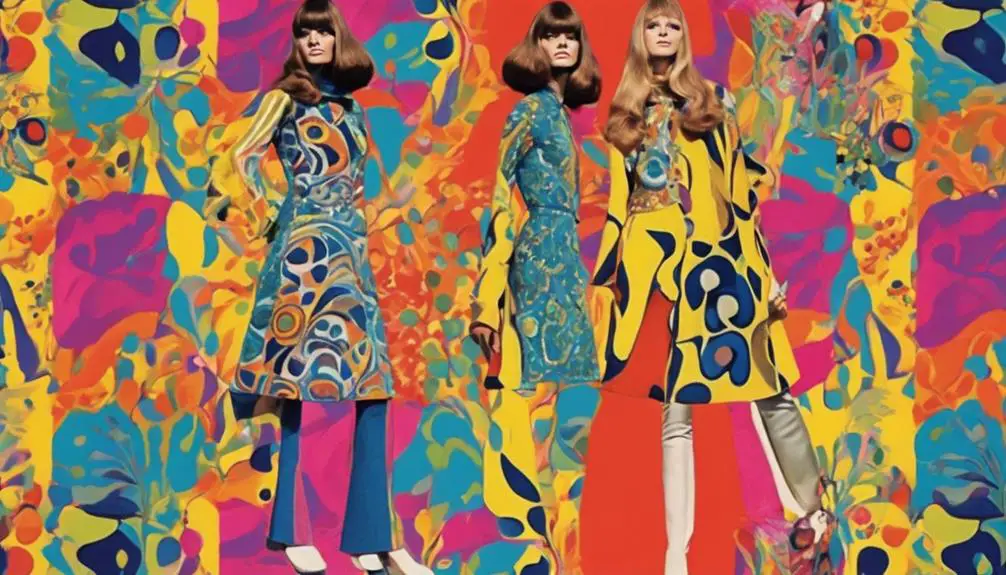
Fashion in the late 1960s wasn't just about iconic designers; it was also defined by popular clothing lines that made waves in the industry. One of the most influential was Mary Quant, who played a key role in popularizing the mini skirt. Her brand made trendy items like pinafores and mix-and-match separates accessible to young women, allowing them to express their individuality.
Then there was Biba, a brand that captured the essence of the era with bold colors and striking designs. Its youthful clothing resonated with the mod culture, embracing a bohemian aesthetic that appealed to the free spirits of the time.
Foale & Tuffin also became well-known for their innovative styles, often featuring bright colors and playful patterns that caught the eye of fashion-forward youth.
Andrè Courrèges revolutionized the scene with his space-age aesthetics, introducing futuristic designs that showcased geometric shapes and materials like plastic and PVC. His work defined the late 1960s, offering a fresh perspective on what fashion could be.
Finally, Ossie Clark gained recognition for his flowing silhouettes and bohemian styles, utilizing vibrant fabrics and patterns that embodied the spirit of the counterculture movement.
These popular clothing lines not only shaped the fashion landscape of the late 1960s but also empowered a generation to embrace their unique styles. Whether you were drawn to mini skirts or space-age vibes, these brands offered something for everyone, making fashion an exciting form of self-expression.
Accessories and Footwear Trends
Go-go boots became the ultimate accessory in the late 1960s, capturing the bold spirit of the era. These shiny, colorful boots, often made of patent leather or vinyl, perfectly complemented mini skirts and shift dresses. If you wanted to stand out, slipping into a pair of go-go boots was a must!
Alongside this footwear trend, oversized sunglasses emerged as a popular accessory, embodying the space-age aesthetic embraced by icons like Jackie Kennedy and Twiggy.
In addition to these striking shoes, statement jewelry took center stage. Bold pieces crafted from plastic, metal, and natural materials reflected the playful spirit of the decade, allowing you to express your unique style. Thigh-high boots also made waves during this time, pushing the boundaries of women's fashion with their daring designs. These boots weren't just footwear; they were a statement!
Scarves and bandanas added to the fun, becoming trendy headwear options that enhanced outfits or paid homage to the bohemian influences of the hippie subculture. Whether you wrapped a scarf around your head or sported it as a chic accessory, it was all about embracing individuality.
As you explore the accessories and footwear trends of the late 1960s, you'll discover a vibrant world where fashion was bold, experimental, and undeniably expressive. From go-go boots to oversized sunglasses, these trends defined an era that celebrated creativity and personal style.
Cultural Impact on Fashion Brands
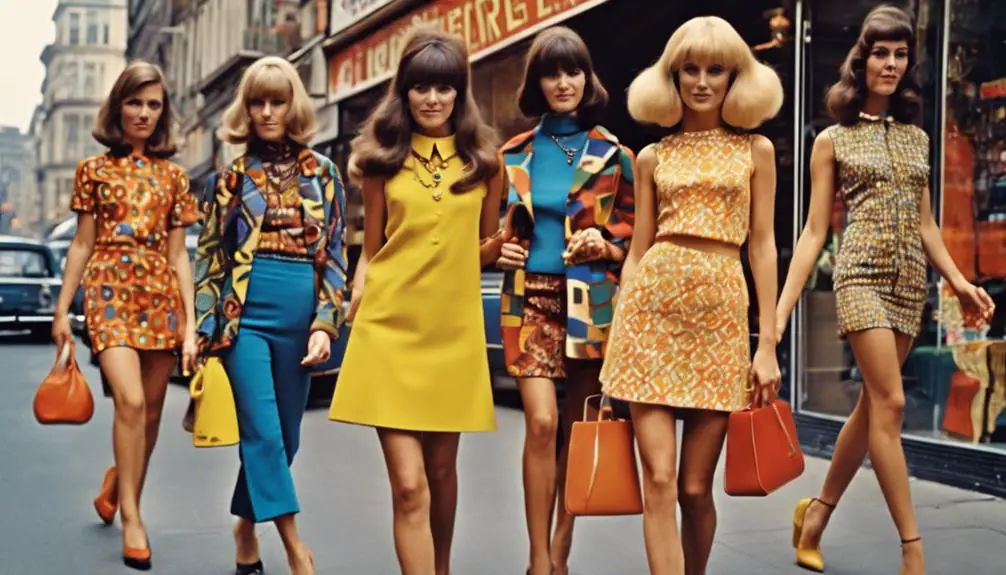
The bold accessories and footwear trends of the late 1960s were just one facet of a larger cultural phenomenon that reshaped the fashion landscape. This era was defined by a vibrant youth culture that sought to express individuality and rebellion. Fashion brands quickly adapted to these changing tides, focusing on styles that resonated with the spirit of the times.
The transformation in men's trousers during this period, marked by the emergence of flare wide-leg pants, exemplified the shift towards casual styles. Here are three significant influences:
- The Mini Skirt: Popularized by Mary Quant's Ginger Group, the mini skirt became a symbol of youthful freedom, allowing young women to embrace their independence and challenge traditional norms.
- Psychedelic Movement: Bold patterns and bright colors took center stage as brands experimented with tie-dye and eclectic prints, reflecting the counterculture's love for creativity and self-expression.
- Space Age Influence: Designers like Pierre Cardin showcased futuristic styles with geometric shapes and innovative materials like PVC, embodying the decade's fascination with technology and modernity.
Music icons like The Beatles and The Who also left their mark on fashion, inspiring brands to create mod-inspired attire that mirrored the evolving styles of these influential figures.
The democratization of fashion allowed everyone, regardless of background, to access trendy clothing that celebrated their uniqueness. As bright colors and bold patterns flourished, brands became a canvas for the cultural movements of the time, ultimately shaping how you express yourself through fashion today.

